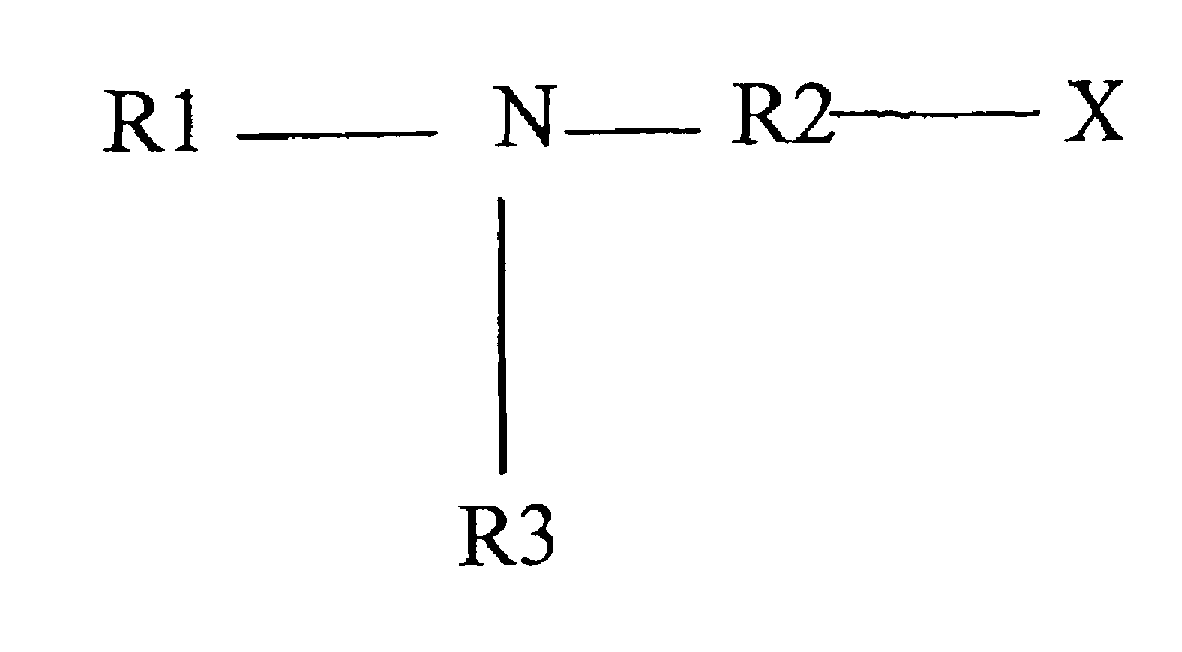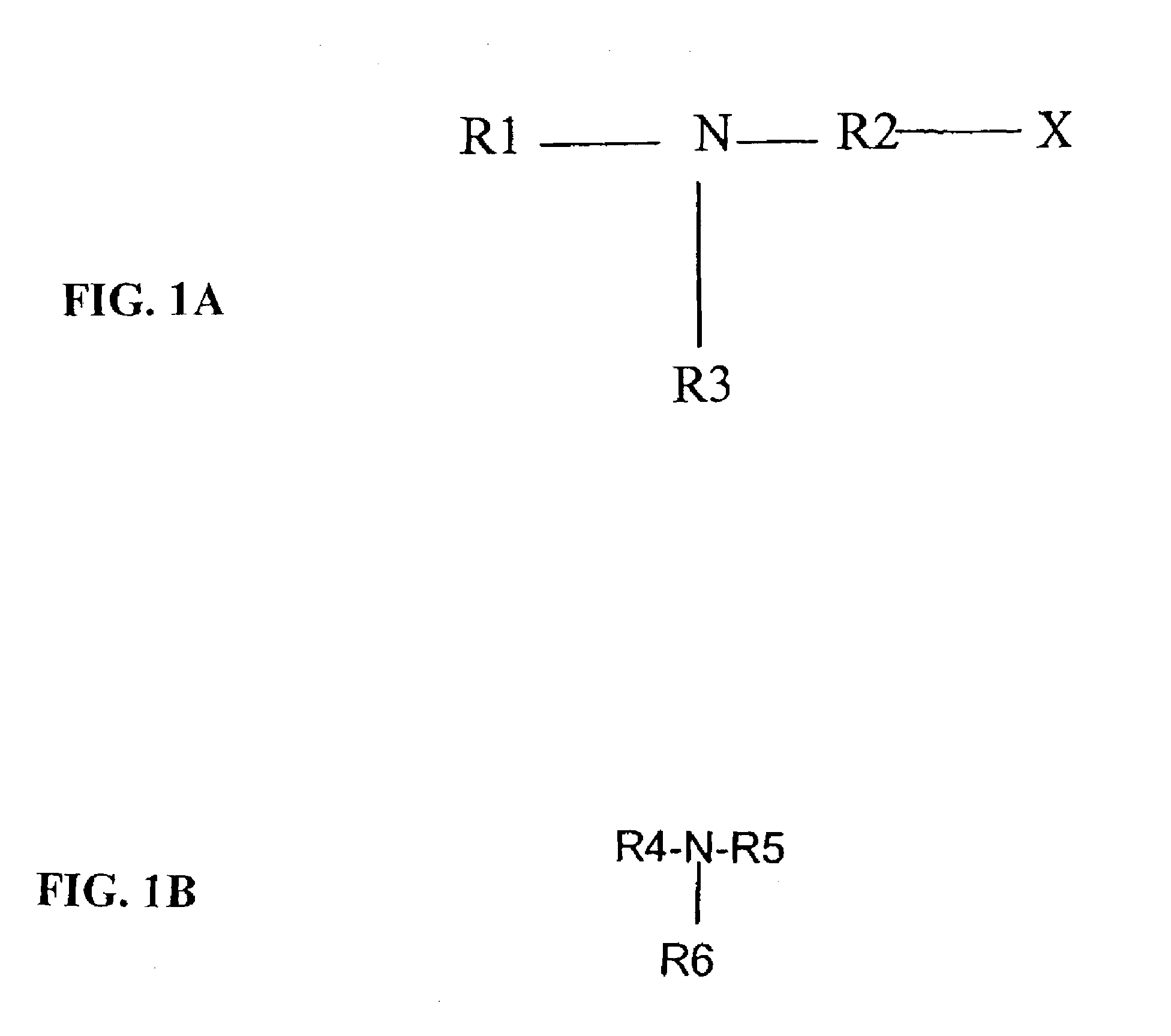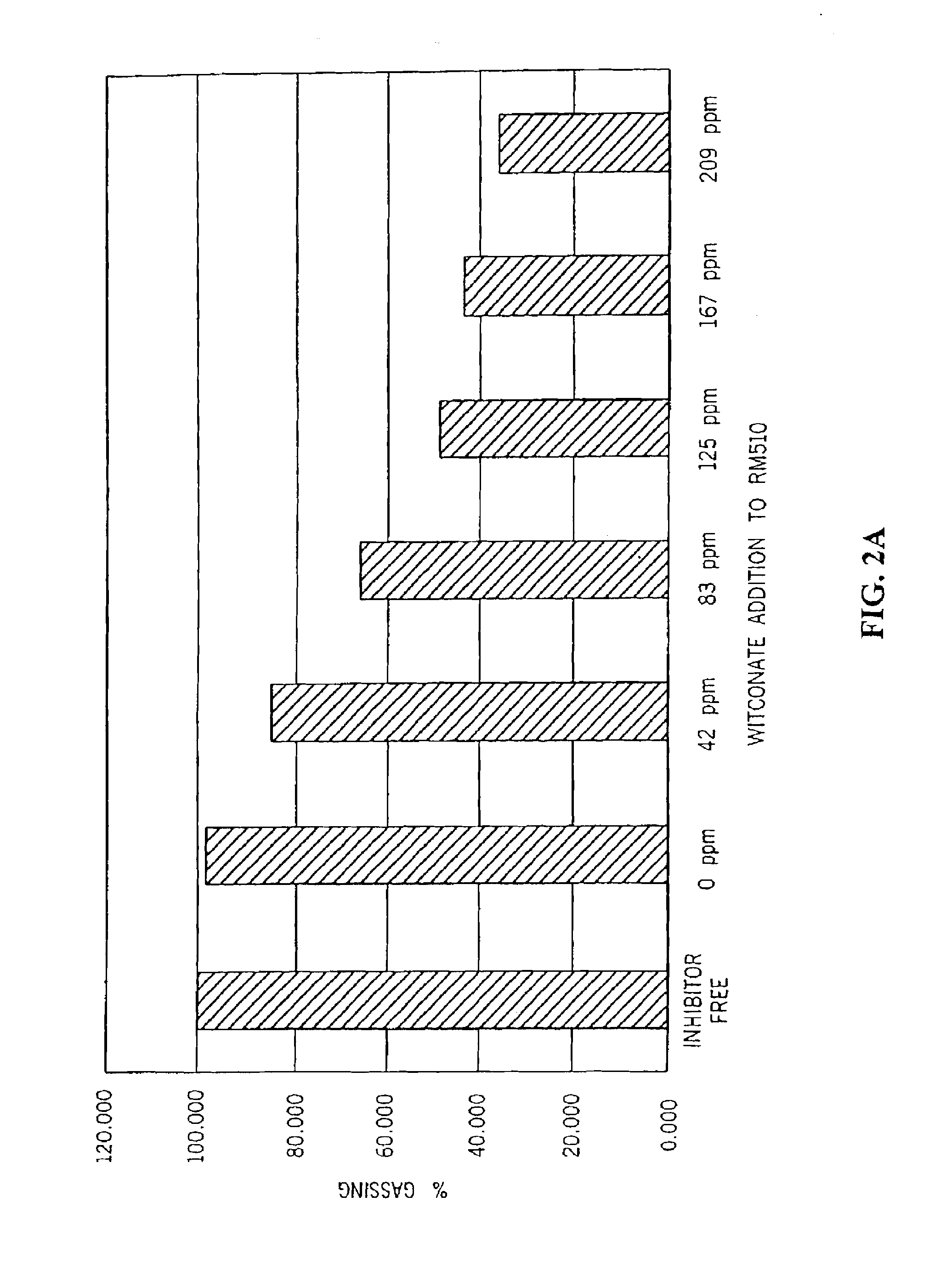Alkaline cell with performance enhancing additives
a technology of alkaline electrochemical cells and additives, applied in the direction of secondary cells, non-aqueous electrolyte cells, cell components, etc., can solve the problems of increasing the rate of corrosion, reducing the availability of active zinc, and prone to electrochemical corrosion reactions in the alkaline electrochemical cell. to achieve the effect of increasing the discharge performan
- Summary
- Abstract
- Description
- Claims
- Application Information
AI Technical Summary
Benefits of technology
Problems solved by technology
Method used
Image
Examples
examples
[0047] Table 1 shows that the three-day gassing rate of gels containing the sulfonated surfactant and the phosphate ester in combination was appreciably suppressed relative to that of surfactant-free gels or to that of gels containing either surfactant alone. The gels of Table 1 were supplemented as shown either with RM-510 to 0.0035%, with Witconate 1840X to 0.0125%, or with both surfactants at the same concentrations, relative to the weight of zinc in the anode gel.
TABLE 1Three-day Gel GassingDescription of Gel sampleμl / g / dayNo inhibitor6.2 ± 1.0RM-5105.4 ± 0.9Witconate 1840X6.8 ± 0.6Witconate 1840X + RM-5103.9 ± 0.5
[0048] Table 2 summarizes partial discharge cell gassing measured in LR03 cells after discharge at 7.5 ohm to a 1.0 volt end voltage and storage for two weeks at 160° F. Overdischarge leakage was measured after continuous discharge at 10 ohms for 48 hours followed by room temperature storage for five weeks. Discharge performance of LR03 cells at 600 mA during 10 seco...
PUM
| Property | Measurement | Unit |
|---|---|---|
| particle size | aaaaa | aaaaa |
| particle size | aaaaa | aaaaa |
| particle size distribution | aaaaa | aaaaa |
Abstract
Description
Claims
Application Information
 Login to View More
Login to View More - R&D
- Intellectual Property
- Life Sciences
- Materials
- Tech Scout
- Unparalleled Data Quality
- Higher Quality Content
- 60% Fewer Hallucinations
Browse by: Latest US Patents, China's latest patents, Technical Efficacy Thesaurus, Application Domain, Technology Topic, Popular Technical Reports.
© 2025 PatSnap. All rights reserved.Legal|Privacy policy|Modern Slavery Act Transparency Statement|Sitemap|About US| Contact US: help@patsnap.com



